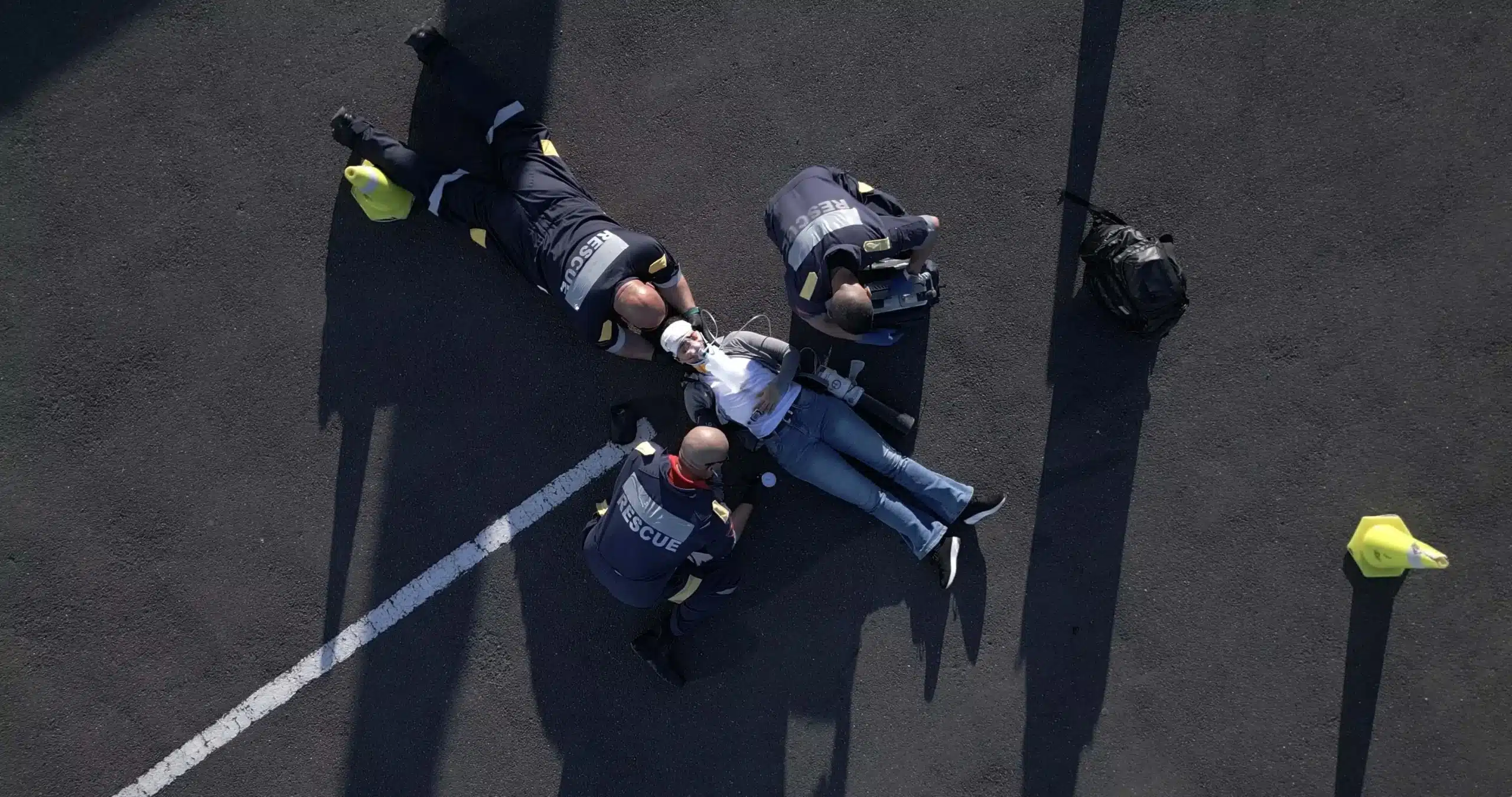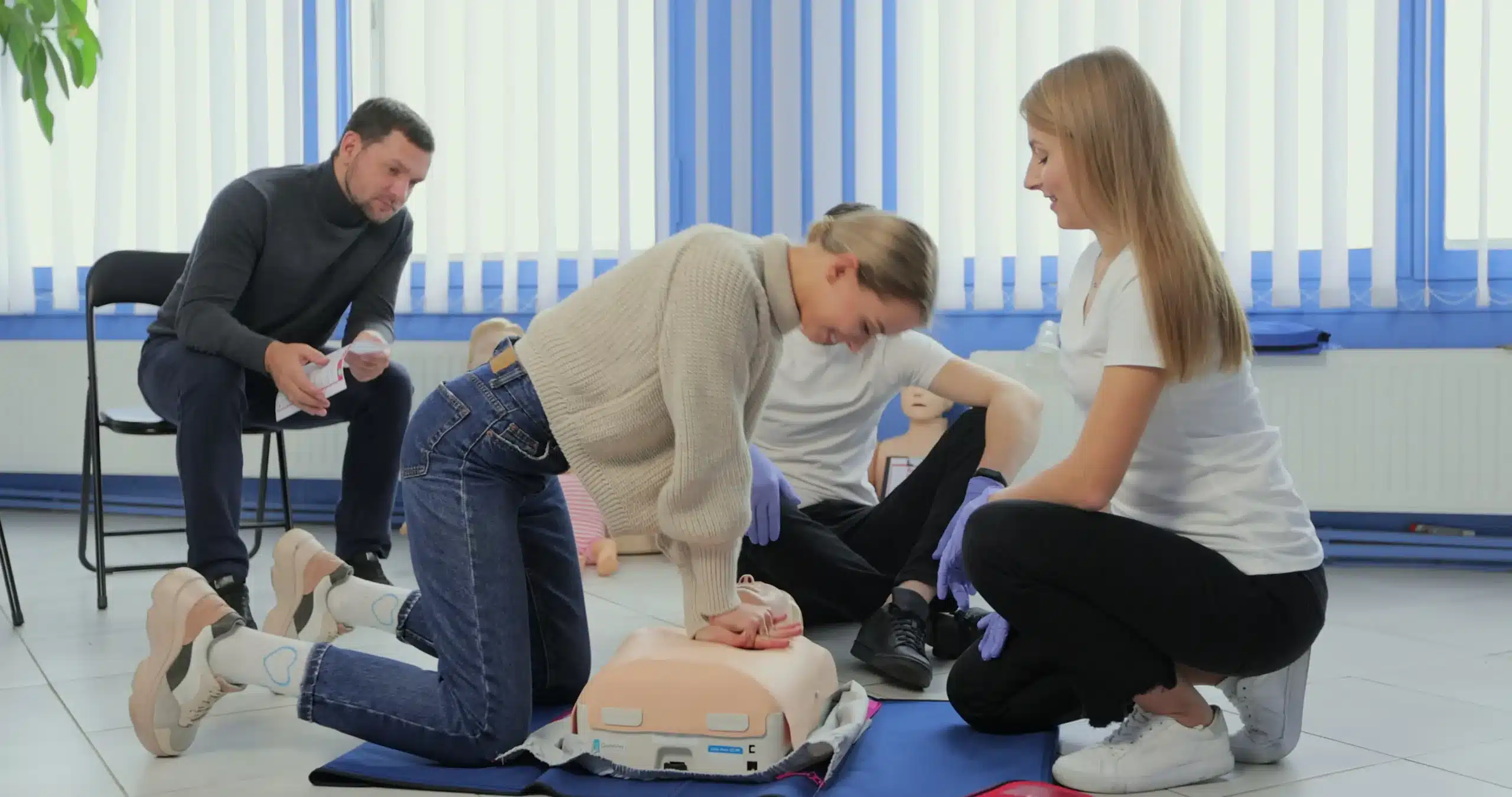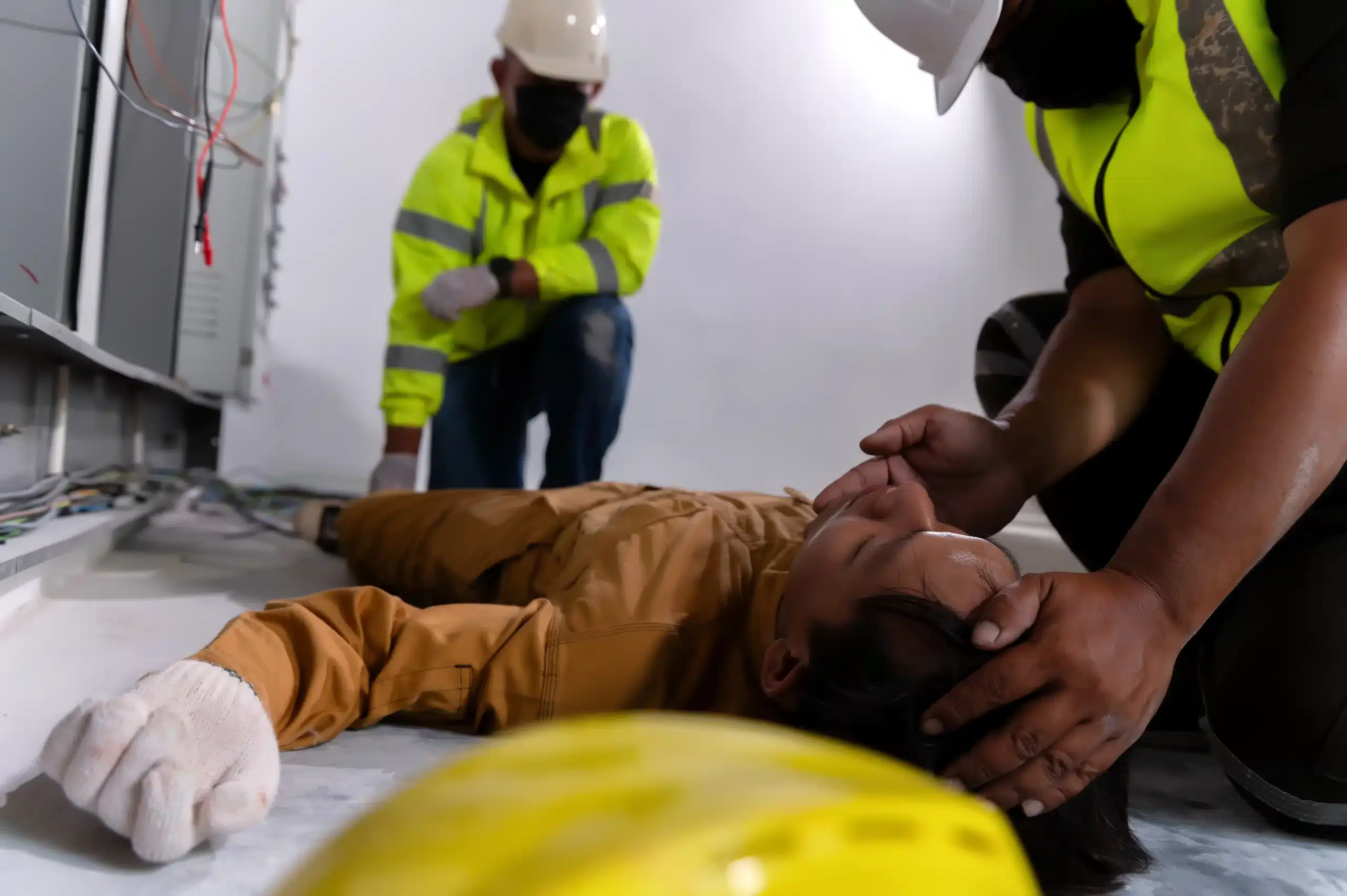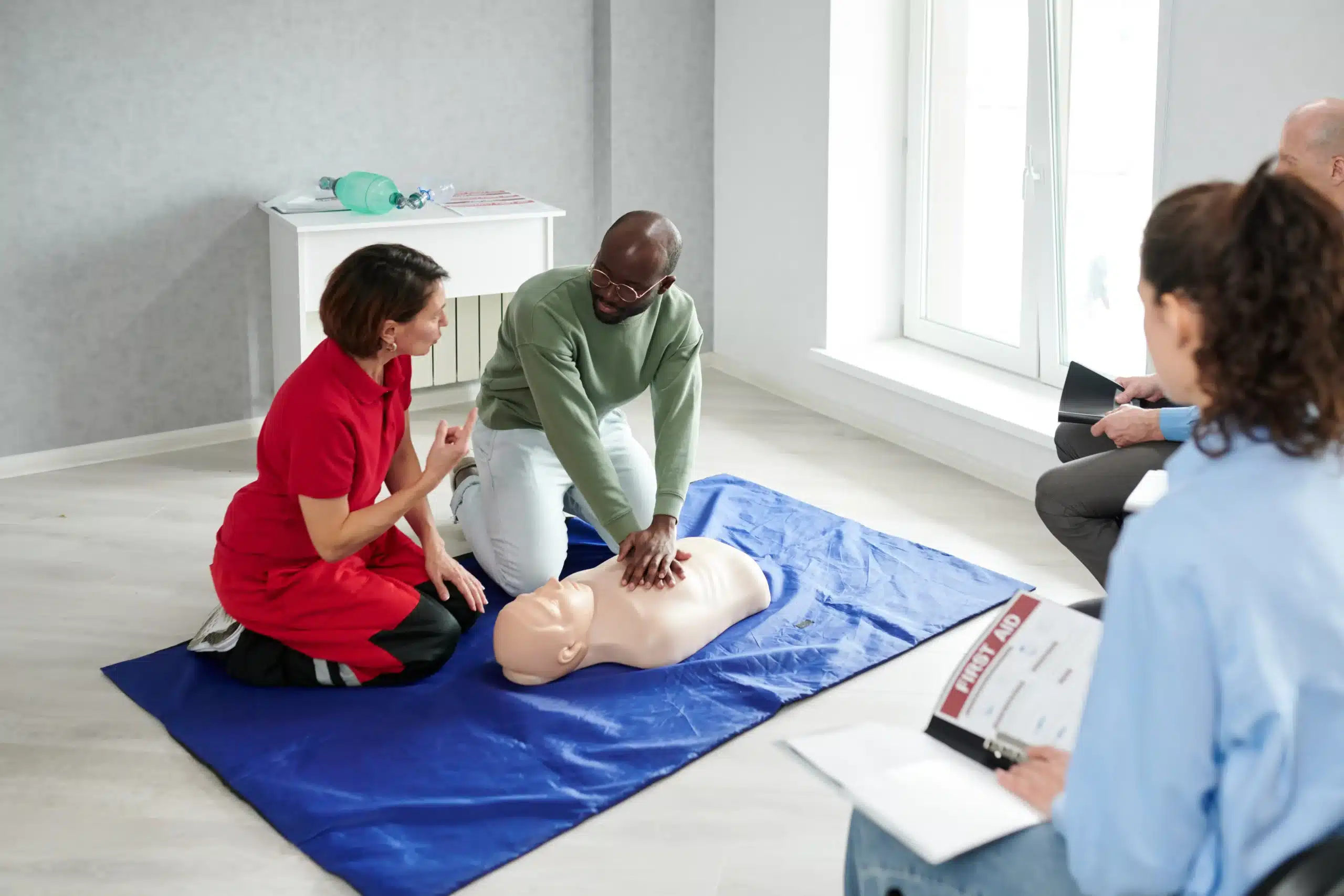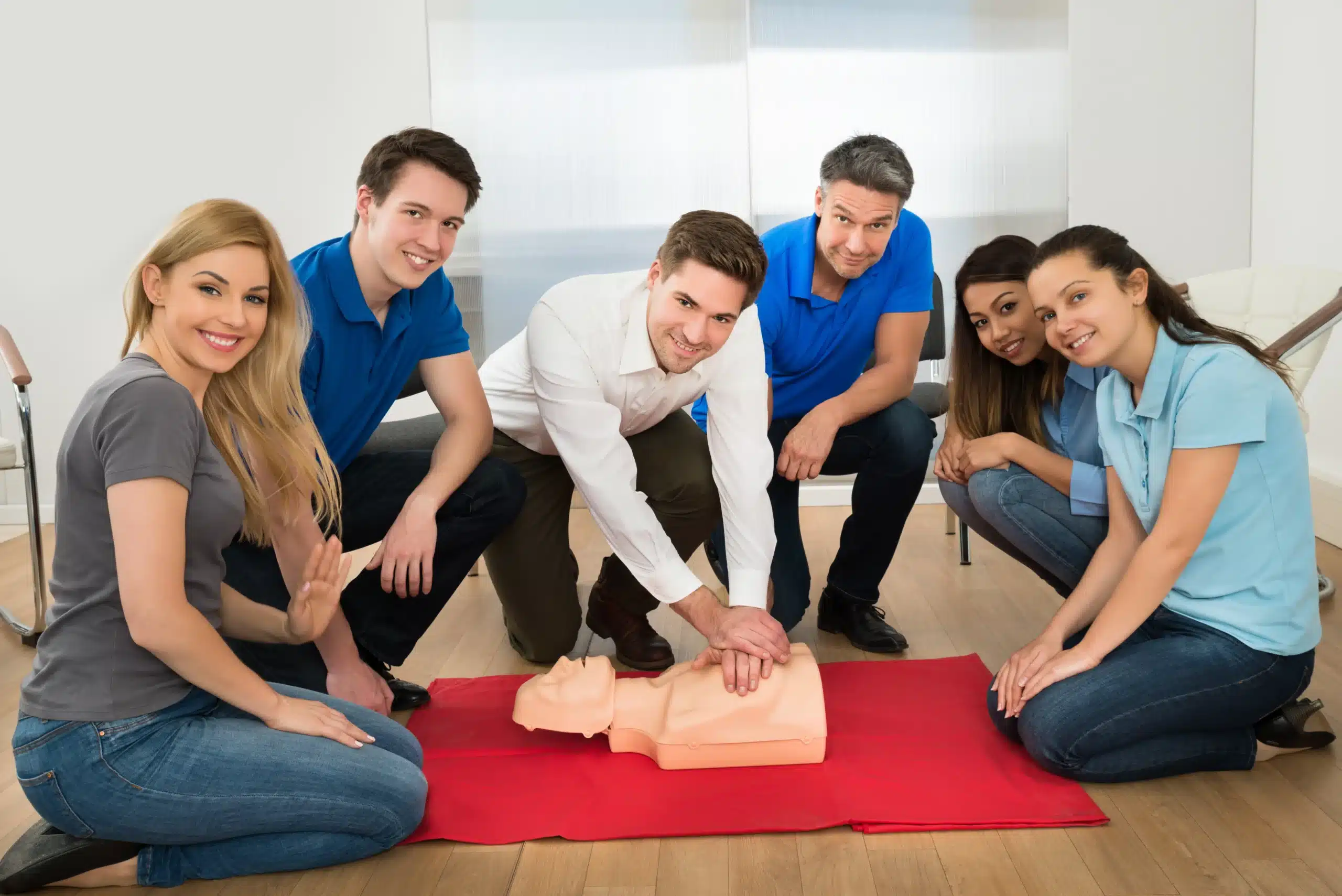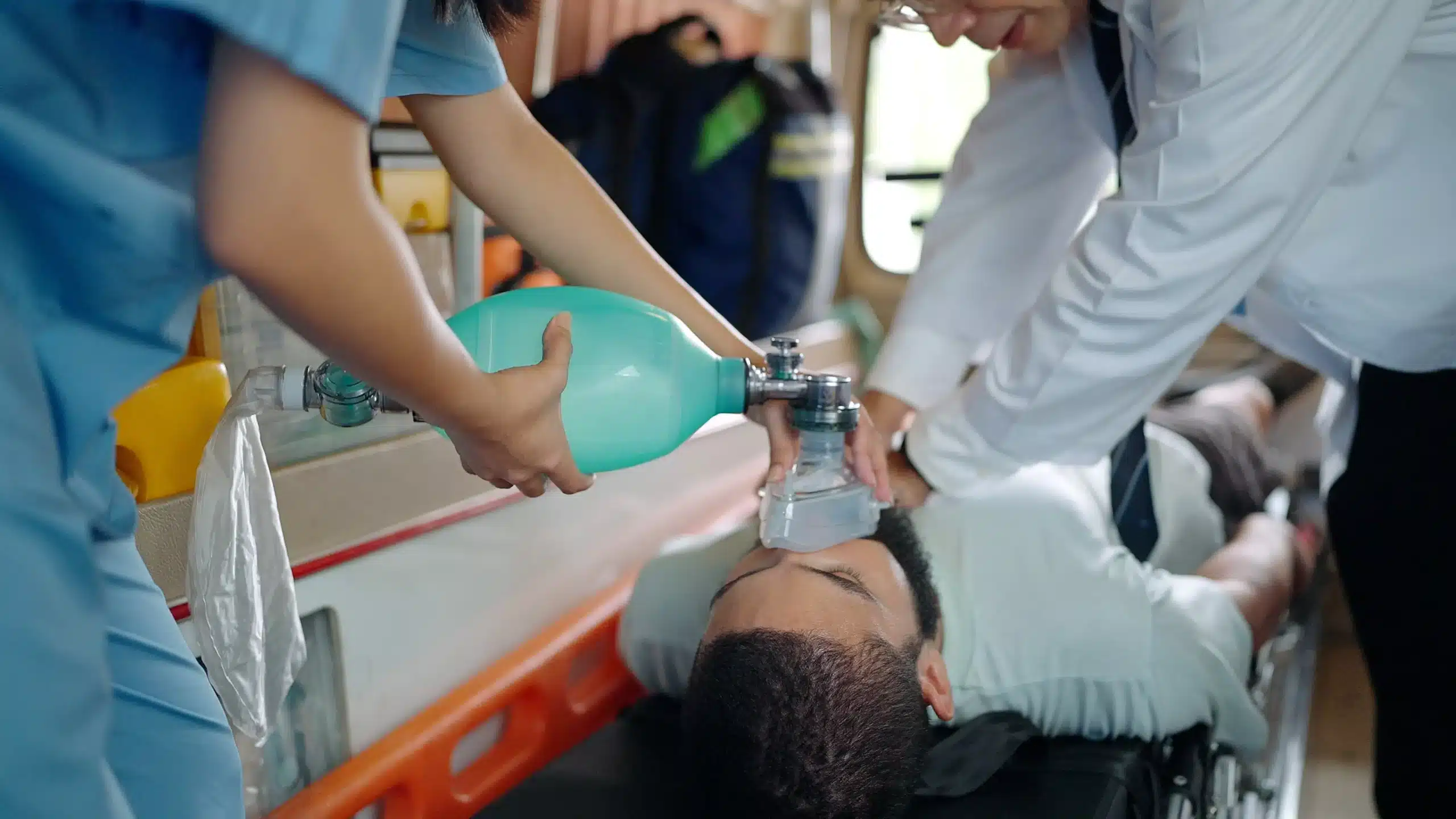In a medical crisis, seconds can matter. Basic Life Support (BLS) training provides the essential skills to respond effectively and potentially save a life. This guide is your go-to resource for understanding BLS, finding “BLS classes near me,” and getting certified. We’ll cover the key components of BLS training, the importance of certification for healthcare professionals and the general public, and how to choose the right training program. Get ready to feel confident and prepared for any emergency.
Key Takeaways
- BLS skills are essential, not just for healthcare professionals: Learning CPR, AED use, and basic airway management can empower anyone to respond effectively during medical emergencies.
- Finding a BLS course near you is straightforward: Utilize online search engines, explore local resources, and consider factors like accreditation, instructor experience, and class size when selecting a provider.
- Preparation is key to maximizing your BLS training: Understand the course structure, utilize available study materials, and plan for maintaining your certification through regular practice and renewal courses.
What is BLS?
Basic Life Support (BLS) certification is a vital credential for healthcare professionals and anyone who wants to be prepared for a medical emergency. It’s important to understand exactly what BLS entails and why it matters. There are some common misconceptions about BLS training, so let’s clear those up.
What BLS Covers
BLS training equips you with essential life-saving skills. You’ll learn CPR (cardiopulmonary resuscitation), how to use an AED (automated external defibrillator), basic airway management techniques, and how to help someone who is choking. BLS certification covers a range of techniques designed to provide immediate care during life-threatening situations. These skills empower you to respond confidently in medical emergencies, whether you’re a healthcare professional or not.
Why BLS Matters
BLS certification is important for everyone. Learning BLS can make a real difference in a crisis—from assisting a family member at home to responding to an incident in public, these skills can save lives. Knowing how to perform CPR and other life-saving techniques can dramatically improve the outcome of a medical emergency. BLS training provides the knowledge and skills to respond effectively until professional medical help arrives. It empowers individuals to take action and potentially save a life.
How BLS Helps Healthcare Professionals
For healthcare providers, BLS certification is even more critical. It’s the foundation for advanced life support and plays a vital role in improving patient outcomes during critical situations. BLS for healthcare providers goes beyond the basics, covering team dynamics, effective communication, and specialized techniques for various medical settings. Healthcare providers with up-to-date BLS certification are better prepared to handle emergencies, leading to improved patient care and safety. It also demonstrates a commitment to maintaining the highest standards of patient care.
Find BLS Classes Near You
Finding the right BLS class is easier than you think. Whether you’re a healthcare professional, a student, or just someone who wants to be prepared, there are plenty of options available. Here’s how to find BLS classes near you:
Search Online
Start with a simple online search. Type “BLS classes near me” or “BLS certification near me” into your favorite search engine. This will give you a list of potential training centers in your area. When selecting a BLS provider, consider factors like course format (online, in-person, or blended), cost, and the training center’s reputation. Reading reviews can be incredibly helpful.
Check Local Resources
Your local hospitals, fire departments, and community centers often offer BLS classes. Check their websites or give them a call to see what’s available. Some providers, like Safety Training Seminars, offer additional resources and support after your class, so it’s worth asking about those perks. You can also check with local chapters of organizations like the American Red Cross and the American Heart Association.
Top BLS Providers
Here are a few well-known BLS providers to get you started:
American Red Cross
The American Red Cross offers BLS certification courses designed to equip you with the skills to assist in emergencies. They are a trusted name in emergency preparedness and offer classes across the country.
American Heart Association
The American Heart Association is another excellent resource for BLS certification. When choosing between online BLS courses and live AHA classes, cost and accessibility are important factors to consider.
Safety Training Seminars
Safety Training Seminars offers a comprehensive range of American Heart Association (AHA) courses, including BLS certification, to prepare you for emergency situations. They are known for their commitment to excellent customer service and offer classes in Oakland and over 60 other cities. They also offer discounts for group classes, which can be a great option for workplaces or groups of friends. Check out their low price guarantee.
Hospitals and Medical Centers
Many hospitals and medical centers, like Hartford HealthCare, offer a variety of AHA-certified CPR, first aid, and advanced life support training courses, including BLS. These classes are often taught by experienced medical professionals.
Colleges and Universities
Colleges and universities frequently offer BLS courses as part of their healthcare programs or as continuing education courses. These programs often have flexible schedules with daily classes, making it easier to find a time that works for you.
What Happens in a BLS Class?
So, you’re ready to take a BLS class? Great! Here’s what you can expect.
Skills You’ll Learn
BLS classes cover core life-saving skills. You’ll learn adult, child, and infant CPR, how to use an AED, and techniques for relieving choking. Airway management is also a key component, giving you the skills to help someone struggling to breathe. These skills prepare you to respond to various medical emergencies, whether you work in healthcare or not. CPR Classes Oakland follows the American Heart Association guidelines, so you can rest assured that your training will meet industry standards. You can find more information on our BLS certification page.
Class Format and Length
BLS courses cater to different learning needs. There are classes for first-time learners, those needing a refresher, and even a challenge option for experienced providers who want to test their knowledge. This flexibility makes it easy to find a course that fits your schedule and experience level. Most BLS classes run between 2.5 and 4.5 hours, covering both theoretical knowledge and hands-on practice. You can learn more about BLS courses from the Red Cross.
Getting Certified
After successfully completing your BLS class—including the skills check and written exam—you’ll receive an American Heart Association BLS Provider certification card. This certification is valid for two years. To maintain your credentials, you’ll need to take a renewal course before your current certification expires. Check out our HeartCode BLS guide for more certification details.
Costs and Discounts
BLS certification is an investment in your skills and ability to help others. The cost of a BLS course can vary, but initial certification typically costs around $90, with renewals around $60. CPR Classes Oakland offers a low price guarantee, ensuring you get high-quality training at a competitive price. We also offer discounts for group classes, making it a cost-effective option for workplaces or groups of friends. You can compare BLS class costs to get a better sense of pricing in your area.
Choose a Great BLS Provider
Finding the right BLS training provider is key to a positive learning experience. Here’s what to look for when making your decision:
Accreditation and Standards
First, confirm the provider offers AHA-accredited BLS certification courses. This ensures the training meets the latest industry standards and guidelines. Also, consider factors like course format (online, in-person, or blended learning), cost, and the training center’s reputation. Think about what works best for your learning style and schedule. Blended learning programs, like HeartCode BLS, combine online coursework with in-person skills sessions, offering flexibility and hands-on practice.
Qualified Instructors
Experienced, certified instructors make all the difference. Look for a provider with instructors who are not only knowledgeable but also passionate about teaching BLS skills. Safety Training Seminars offers instructor-led training, ensuring you receive personalized guidance and support.
Class Size and Hands-on Learning
A smaller class size often means more individual attention from the instructor and ample opportunities for hands-on practice. Check if the provider offers practice with essential skills like CPR and using an AED in a realistic setting. This practical experience builds confidence and prepares you to respond effectively in real-life emergencies.
Student Reviews and Success
Reading reviews from past students can give you valuable insights into a BLS training program’s quality. Look for providers with positive feedback regarding instructors, course content, and the overall learning experience. Consider whether the provider offers additional resources and support after you complete the class, such as refresher courses or access to online materials.
Prepare for BLS Certification
Getting ready for your BLS certification involves a few key steps, from understanding the costs to preparing for the course itself. Let’s break down how to get ready for a smooth and successful BLS learning experience.
Enrollment and Prerequisites
Enrolling in a BLS certification course is usually straightforward. There aren’t typically any prerequisites, making these courses accessible to a wide range of people. While costs can vary, most BLS courses run around $90 for initial certification and about $60 for renewal. Be wary of providers charging significantly more—competitive pricing is usually easy to find. Safety Training Seminars offers affordable options for those seeking certification or recertification.
Study Resources and Preparation
Many BLS courses offer various learning formats, including in-person and online options, to accommodate different schedules. Some providers, like Safety Training Seminars, offer helpful resources and support even after you’ve completed your class. This can include refresher materials, access to online communities, or ongoing instructor support. Having access to these resources can make a big difference in retaining the information and feeling confident in your skills.
Overcome BLS Training Challenges
One of the biggest hurdles for healthcare professionals is finding the time for BLS recertification. Busy schedules, long shifts, and the demands of patient care can make it tough to fit in a training course. Look for providers that offer flexible scheduling, weekend classes, or online renewal options. Safety Training Seminars offers various class times and formats to meet these needs. Another common mistake is not reviewing the material before your recertification test. BLS guidelines can be updated, so brushing up on the material beforehand will help you stay on top of any changes.
Maintain Your Certification
BLS certification is valid for two years. To stay current, make sure you’re familiar with the latest guidelines, practice your skills regularly, and consider attending refresher courses. Consider joining a group class to refresh your skills and learn from others. Keeping your documentation up-to-date is also essential for a smooth renewal process. Staying on top of these elements will ensure your BLS skills remain sharp.
Related Articles
- BLS Certification Alameda: The Ultimate Guide – Oakland CPR Classes
- BLS Certification in Oakland for Healthcare Providers – Oakland CPR Classes
- BLS Classes in Oakland: The Ultimate Guide – Oakland CPR Classes
- BLS Renewal in Alameda: Your Easy Guide – Oakland CPR Classes
- Advanced Cardiac Life Support in Oakland: Find the Right Course – Oakland CPR Classes
Frequently Asked Questions
Why is BLS certification important? BLS certification equips you with crucial skills to respond effectively in medical emergencies. These skills can make a significant difference in life-threatening situations, whether you’re assisting a family member at home or responding to an incident in a public setting. For healthcare providers, BLS is fundamental to advanced life support and demonstrates a commitment to high-quality patient care.
How do I find a BLS class near me? Finding a BLS class is easy. Start by searching online using keywords like “BLS classes near me.” You can also check with local hospitals, fire departments, community centers, or organizations like the American Red Cross and American Heart Association. They often offer BLS courses.
What can I expect during a BLS class? In a BLS class, you’ll learn essential skills such as adult, child, and infant CPR, AED usage, and how to relieve choking. The class format typically involves a combination of theoretical instruction and hands-on practice. After successfully completing the course and passing the required assessments, you’ll receive an American Heart Association BLS Provider certification card, valid for two years.
How much does BLS certification cost? The cost of BLS certification varies, but generally, initial certification is around $90, and renewal is around $60. Look for providers offering competitive pricing and discounts, especially for group registrations. Be wary of programs with significantly higher costs than the average.
What should I look for in a BLS training provider? Choose a provider offering AHA-accredited BLS courses to ensure the training aligns with the latest industry standards. Consider factors like instructor experience, class size (smaller classes often allow for more personalized attention), and the availability of hands-on practice. Reading reviews from previous students can also offer valuable insights into the quality of the program.


